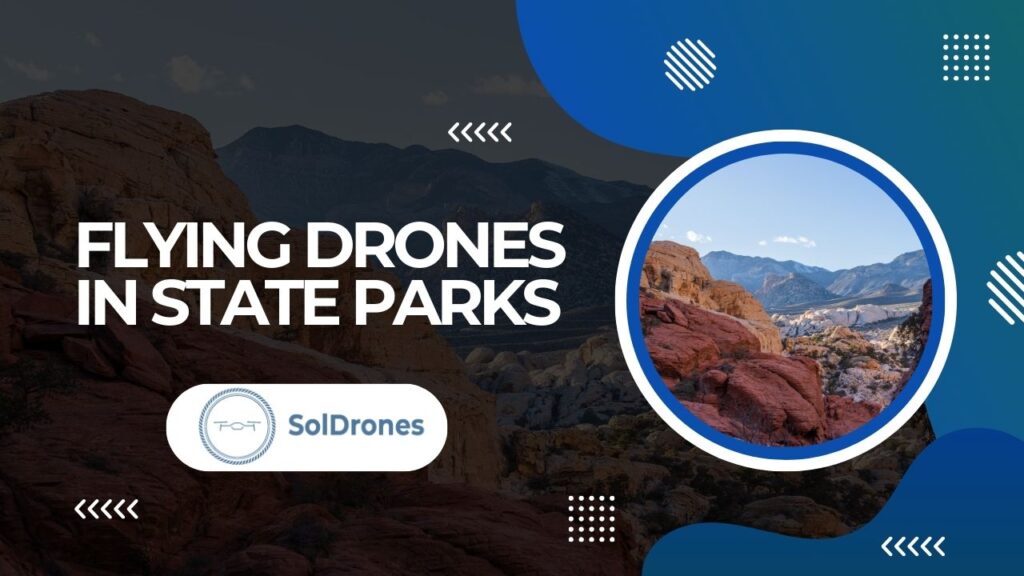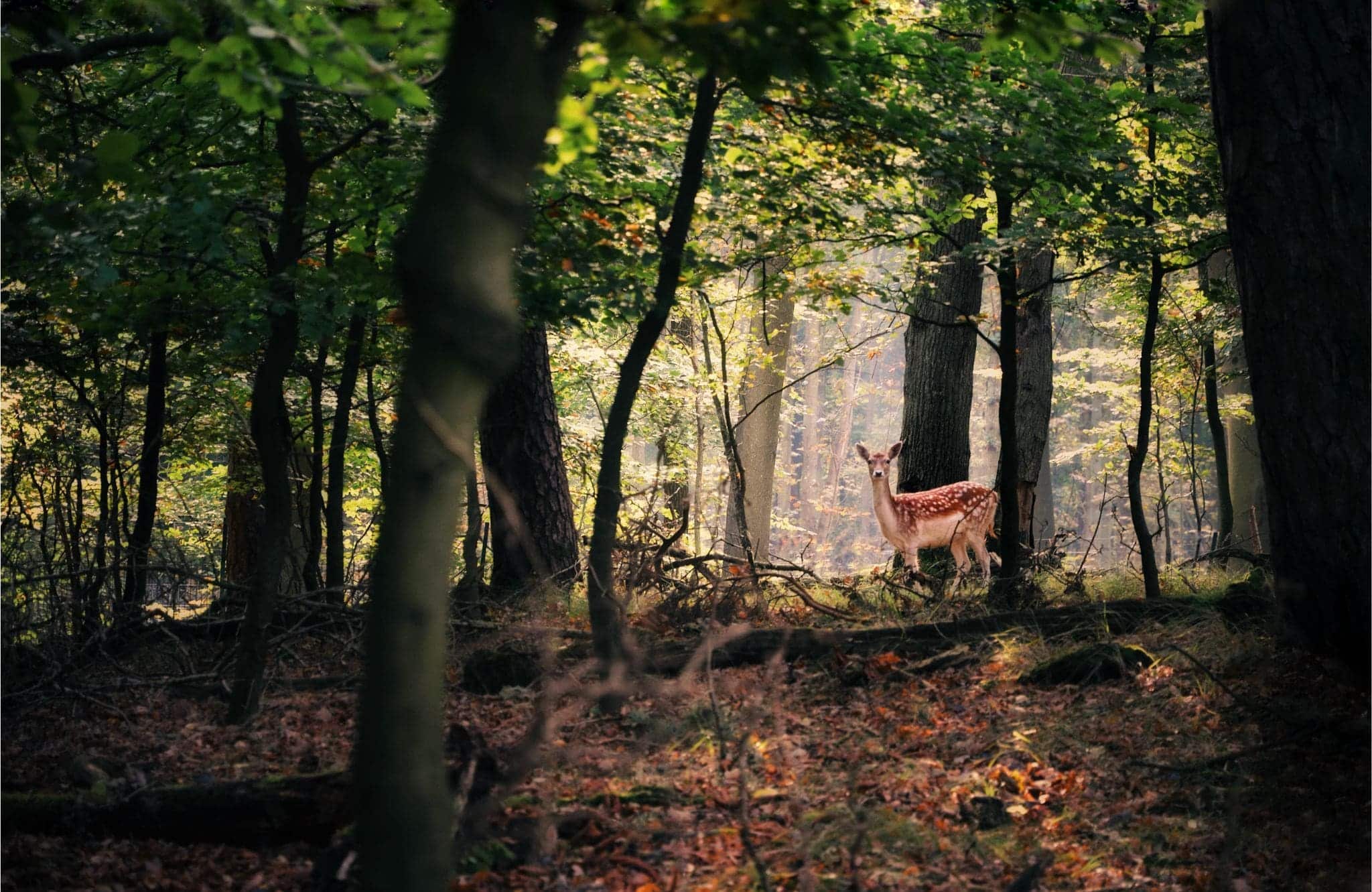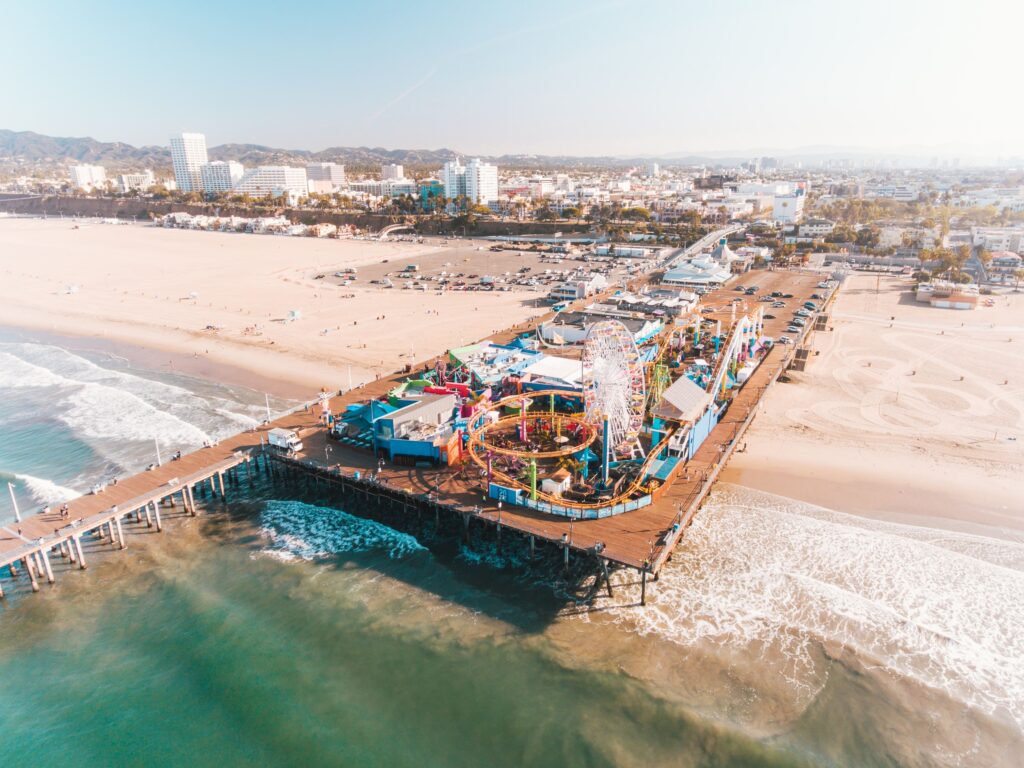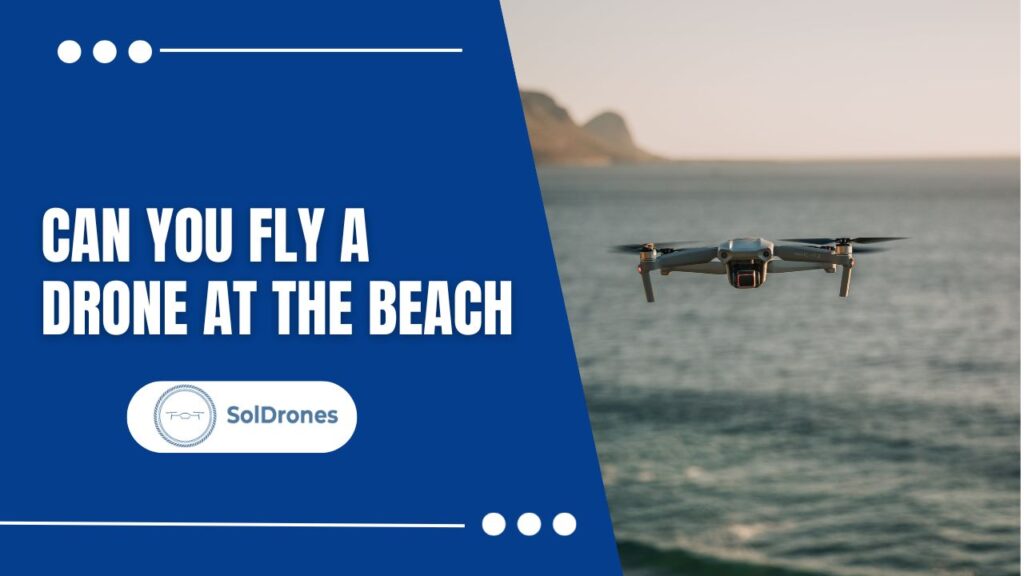“Every flight tells a story,” begins our tale of mastering the art of flying drones in state parks.
Before you break out the drone in state parks, be sure you know the laws and regulations so you can avoid fines and penalties.
This guide offers a deep dive into the critical regulations, every designated flying site, safety norms, and ethics for drone enthusiasts.
Drones can pose a safety risk to both wildlife and humans. National parks often have strict regulations on how close visitors can get to wildlife and their habitats to ensure the safety of both parties.
We cover everything from understanding diverse laws to ensuring safety and respecting nature.
This is more than a guide; it’s a pledge to responsible, awe-inspiring drone adventures amidst nature’s wonders.
Article Highlights:
- Explore the essentials of flying drones in state parks, covering regulations, designated flying sites, and commitment to safety and ethical drone use.
- Uncover the reasons behind the ban on drones in US National Parks, focusing on the protection of wildlife, visitor experiences, and safety concerns.
- Navigating state park drone regulations, the article details the diversity of laws, permit processes, and area-specific drone flying guidelines.
Why are Drones Banned in US National Parks?
Drone operations are largely banned in US National Parks primarily due to environmental and safety concerns. The National Park Service (NPS) initiated this ban in 2014 after several incidents that raised serious concerns about the negative impact of flying unmanned aircraft on visitors, staff, and wildlife safety.
51 Drones covers some of the regulations in National Parks in this short video.
Video Credit: 51 Drones
One of the main reasons for this prohibition is the protection of wildlife and their natural habitats.
Drones can disrupt the natural behavior of animals, causing stress and altering their patterns, which can have adverse effects on the overall ecosystem and wildlife populations.
Additionally, the noise and visual disturbance caused by drones can disrupt the experiences of other park visitors.
National parks are places of tranquility and solitude, where people go to appreciate and connect with nature, and the presence of drones can be disruptive and diminish this serene atmosphere.
Furthermore, drones can pose a safety risk to both wildlife and humans. National parks often have strict regulations on how close visitors can get to wildlife and their habitats to ensure the safety of both parties.
Drones can easily fly too close to animals, potentially causing them harm or forcing them to flee their natural habitats.
In some cases, the presence of drones can even lead to accidents or injuries, especially if they lose control or collide with people or objects.
What Are the Regulations for Drone Usage in State Parks?
Federal Government regulations for drone usage in state parks in the United States vary significantly from state to state, according to park unit classification, and even within different areas of each state park.
Here’s a general overview of the guidelines from various states, though please note that laws and regulations are subject to change over time:
- California: Drones are usually allowed in State Parks, State Beaches, State Historic Parks, State Recreational Areas, and State Vehicular Recreation Areas, except where prohibited by a District Superintendent’s posted order. Restrictions may include protection of threatened species, threats to cultural and natural resources, high fire danger, public safety, recreational conflicts, and impacts on visitor experience privacy. Drones are prohibited in state wilderness areas and natural and cultural preserves. Recreational drone and UAS operators are advised to consult the Federal Aviation Administration rules and local regulations.
- West Virginia, Wisconsin, and Wyoming: Drones are allowed for recreational and commercial use, subject to FAA regulations and flight controls put in place by local governments.
- Maine: General use of drones is prohibited in Maine State Parks, Historic Sites, or DACF Boat Launches without direct oversight and guidance of an approved law enforcement agency or by the issue of a Special Activity Permit.
- Maryland: Requires a permit for commercial drone use in state parks.
- Massachusetts: Requires a special use permit for drone operation in state parks.
- Michigan: Has specific restrictions on drone usage, including prohibitions on interfering with department employees, flying near cultural/historical sites, occupied beach areas, etc.
- Minnesota: Discourages the use of drones in state parks, recreation areas, and waysides and prohibits landing on lands or water within these areas.
- Mississippi: No specific mention of prohibiting drone use, but it is advisable to check with the state park for their policy.
- Missouri: Drones are permitted in main, open day-use areas with certain rules to be respected.
- Montana: Drones cannot operate in state parks unless in a designated area or with a special use permit.
- Nebraska: Drones are outlawed from state parks, historical areas, and recreation areas for privacy and public safety.
- Nevada: Requires a special use permit or operation in a designated area by the state park supervisor.
- Florida State Parks: According to the Florida Administrative Code, drone launches and landings are restricted in Florida State Parks except in rare cases.
- Washington State Parks: Aircraft drones are remote-controlled. State Parks prohibit drone use for filming or other purposes without permission.
- Oregon Parks: Statewide drone regulations for Oregon State Parks are lacking. Instead, each state park can approve, prohibit, or restrict drone use.
In addition to these state-specific regulations, drone operators must also adhere to universal FAA drone rules, such as keeping the drone within visual line of sight, not flying over 400 feet, not flying near people or stadiums, and not flying in adverse weather conditions.
Drones must be registered, and commercial operators are required to get a license for their drones.
Due to the diversity in regulations, it’s crucial for drone operators to check the specific rules of the state park they plan to visit.
How Can I Obtain a Permit to Fly a Drone in a State Park?
Obtaining a permit to fly a drone in a US state park can vary depending on the specific park and state regulations. However, here’s a general guide to help you navigate the process:
#1) Check the Park’s Website and Contact Park Rangers
Most state parks have dedicated sections on their websites outlining drone regulations and permit requirements. Start by searching the park’s website for keywords like “drone permits,” “drone regulations,” or “UAS (Unmanned Aircraft Systems) rules.”
Contact the park ranger station directly if you can’t find the information you need online. They can answer your questions about specific permit requirements and application procedures.
#2) Determine if You Need a Permit
Not all state parks require permits for drone use. Some parks may only require permits for commercial operations, while others may have blanket bans on drone flights altogether.
Review the park’s regulations carefully to understand whether a permit is necessary for your planned activity.
#3) Apply for the Permit
If a permit is required, the park’s website will usually have instructions on how to apply. This may involve completing an online form, submitting supporting documents, and paying a fee.
Be prepared to provide details about your planned flight, including the type of drone you will be using, the date and time of your flight, and the specific location you wish to fly a drone in.
Allow ample processing time for your permit application. Some parks may require several weeks or even months to process permit requests.
#4) Familiarize Yourself with the Permit Conditions
Once you receive your permit, read it carefully to understand its specific conditions. These may include limitations on flight duration, altitude, distance from people and wildlife, and authorized flight zones.
Always abide by the permit conditions to avoid fines or confiscation of your drone.
Here are some additional tips for obtaining a permit to fly a drone in a US state park:
- Plan your flight well in advance. The earlier you apply for a permit, the better chance you have of getting it approved before your planned trip.
- Be prepared to answer questions from local park rangers. They may ask you about your experience level, the purpose of your flight, and your safety plans.
- Fly a drone responsibly and respectfully. Always follow the permit conditions and park regulations, and be considerate of other park visitors and wildlife.
By following these steps and tips, you can increase your chances of obtaining a permit to fly a drone in a US state park and enjoy a safe and responsible flight experience.
Remember: Responsible drone use is essential for protecting local parks’ natural beauty and tranquility while ensuring everyone’s safety and enjoyment.
I hope this information helps you navigate the permit process and enjoy your drone flight in the stunning landscapes of US state parks!
Are There Specific Areas Where I Can and Cannot Fly My Drone in State Parks?
In state parks across the United States, there are specific areas where you can and cannot fly a drone.
These restrictions are often based on various factors, including protecting wildlife, visitor safety, and preserving cultural and natural resources.
Each state and even individual parks within a state may have different rules. Here are some general guidelines and examples:
- Protected Areas: Many parks restrict drone usage in areas designated for the protection of wildlife and natural habitats. For instance, California State Parks prohibit the use of drones in state wilderness areas, natural preserves, and cultural preserves.
- Near Visitor Centers and Recreational Areas: Some parks may allow drone flying near visitor centers, concession stands, or historical sites, but only with a permit.
- Proximity to Crowds and Public Spaces: Drones are often not allowed to be flown over public areas like campgrounds, beaches, and roads and within a certain distance of other people or property without their consent.
- Sensitive Areas: Flying over cultural or historical sites or structures is typically prohibited. This is to prevent disturbances and preserve the integrity of these sites.
- Special Designated Areas: Some parks, like Martin Dies, Jr. State Park in Texas, have designated areas where drones can be flown. For recreational drones, these designated areas are the safest bet for drone flying.
- Commercial Use: For commercial drone use, including filming and photography, a permit is usually required, and there may be designated areas or restrictions on where the drone can be flown.
- Night Flying: Generally, flying drones during night hours is restricted in many parks.
- Near Airports: As per FAA regulations, drones should not be flown near airports or in restricted airspace without proper authorization.
It’s crucial to check the specific regulations of the state park you plan to visit, as each park has its own set of rules.
Contacting the park office or visiting the park’s official website for the most current and detailed information is recommended.
Compliance with FAA regulations is also necessary when flying drones in any outdoor area.
What Should I Do If a Park Ranger Approaches Me While Flying a Drone?
If a park ranger approaches you while you are flying a drone, it is important to respond in a respectful and cooperative manner. Here are some steps you should follow:
Land Your Drone
Safely land your drone as soon as possible. Continuing to fly the drone while interacting with a park ranger can be perceived as non-compliance or disrespectful.
Be Polite and Respectful
Address the ranger courteously and listen carefully to what they have to say. Park rangers are responsible for enforcing park rules and regulations, and their concerns are usually about the safety and preservation of the park’s environment.
Provide Information
Be prepared to provide information about your drone and your activity. This might include showing any permits or authorizations you have obtained for flying the drone in the park.
Comply with Requests
If the ranger asks you to stop flying your drone, comply with the request. They may have valid reasons related to safety, privacy, or park regulations that you might not be aware of.
Ask Questions If Needed
If you are unsure about why you are being approached or the specific regulations, politely ask the ranger for clarification. They can provide valuable information about drone flying policies specific to the park.
Understand the Regulations
Being informed about the park’s drone policies is beneficial before you start flying. This knowledge can help address the ranger’s concerns and demonstrate that you are a responsible drone operator.
Be Prepared for Consequences
If you were unknowingly violating park rules, be prepared to face potential consequences, which could range from a warning to a fine, depending on the park’s policies and the nature of the violation.
Remember, each state and even individual parks within a state may have different rules for drone usage. It’s always best to be informed about these rules beforehand to avoid misunderstandings or conflicts.
Can I Fly My Drone in State Parks During Emergencies or Special Situations?
Flying drones in state parks during emergencies or special situations is generally not advised and is often prohibited. Here’s why:
- Interference with Emergency Operations: During emergencies, such as wildfires or search and rescue operations, airspace over the affected area may be used by emergency response teams, including helicopters and airplanes. Flying drones and Unmanned Aircraft Systems in these situations can interfere with emergency operations and can be dangerous. In fact, there have been instances where drones have caused delays in firefighting efforts because aircraft had to be grounded to avoid collisions.
- Safety Risks: In emergency situations, conditions are often unpredictable and hazardous. Operating a drone in such environments poses significant safety risks to the operator and emergency personnel.
- Legal Consequences: Flying a drone during an emergency situation can lead to legal consequences, including fines and criminal charges, especially if it interferes with emergency response efforts.
- Park Policies: Many state parks have specific policies that restrict or prohibit drone use during emergencies or special situations. These policies are in place to ensure the safety of all park visitors and staff and the efficacy of emergency operations.
- Notification and Coordination: If you believe there is a valid reason to operate a drone during an emergency (e.g., for official documentation or support), it is crucial to coordinate with the relevant authorities and recreation department, including the park manager and emergency response teams. Unauthorized drone flights can complicate emergency responses and are generally not permitted.
It’s best to avoid flying drones in state parks during emergencies or special situations. If you’re unsure about the specific rules of a park, it’s always a good idea to contact park authorities for guidance. Compliance with park regulations and FAA rules, especially regarding airspace use during emergencies, is critical for the safety of all involved.
Final Thoughts
Exploring the world of drone flying in state parks presents a unique blend of excitement and responsibility.
As we’ve navigated various regulations and safety guidelines, it’s clear that each state park has its own rules influenced by environmental, safety, and privacy concerns. The key to a fulfilling drone flying experience lies in adhering to these regulations, obtaining necessary permits, and being mindful of the park’s natural inhabitants and fellow visitors.
This guide is not just about the mechanics of drone operation but also a call to embrace responsible and ethical drone usage, ensuring that the beauty and tranquility of state parks remain undisturbed. Whether you’re capturing stunning vistas or engaging in recreational activities, remember that every drone flight contributes to the narrative of our shared natural spaces.
FAQs
What should I do if my drone crashes in a state park?
If your drone crashes, retrieve it, if possible, without disturbing the environment. Report the crash to park authorities, especially if it’s in a sensitive area or you cannot retrieve it. Follow any instructions given by the park staff.
Can I use my drone for wildlife photography in state parks?
While drones can capture stunning wildlife images, many parks restrict their use near animals to prevent disturbance. Always follow park rules regarding wildlife observation and use zoom capabilities rather than getting close.
Are there noise restrictions for flying drones in state parks?
Yes, some parks might have noise restrictions to maintain a peaceful environment. It’s best to check with the park authorities or look for posted information regarding noise restrictions.
Can I use a drone for educational or research purposes in a state park?
Drones may be used for educational or research purposes, but this usually requires special permission or permits, particularly if it involves collecting data or images.
Can children fly drones in state parks under adult supervision?
Children can fly drones under adult supervision, but the adult is responsible for following all park regulations and FAA rules. It’s crucial to teach children about safe and responsible drone operations.




